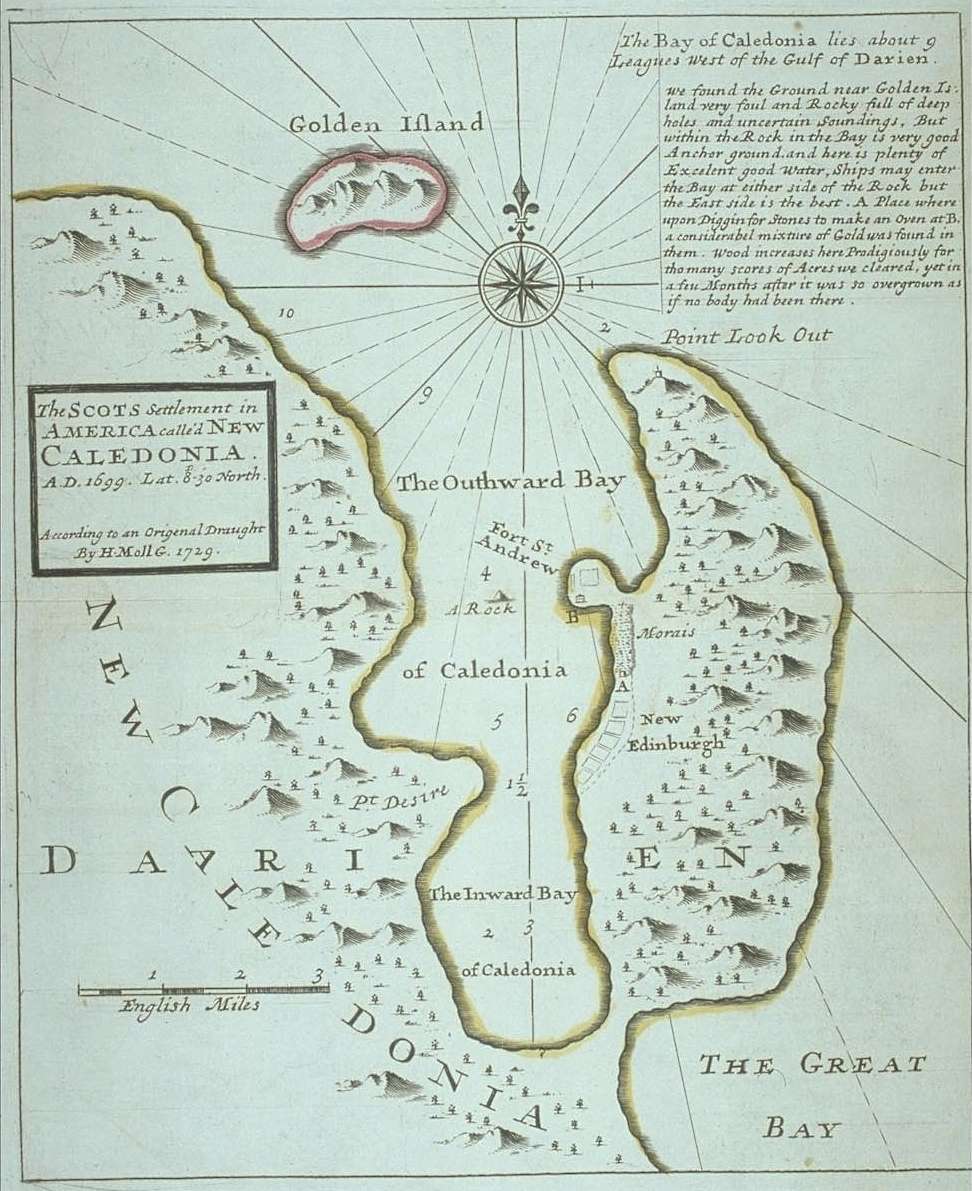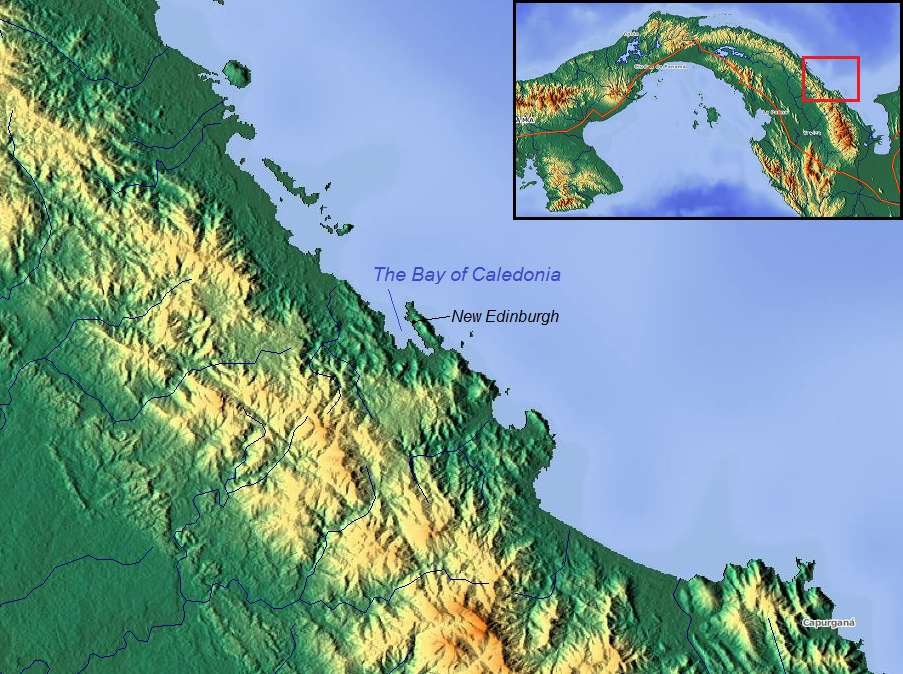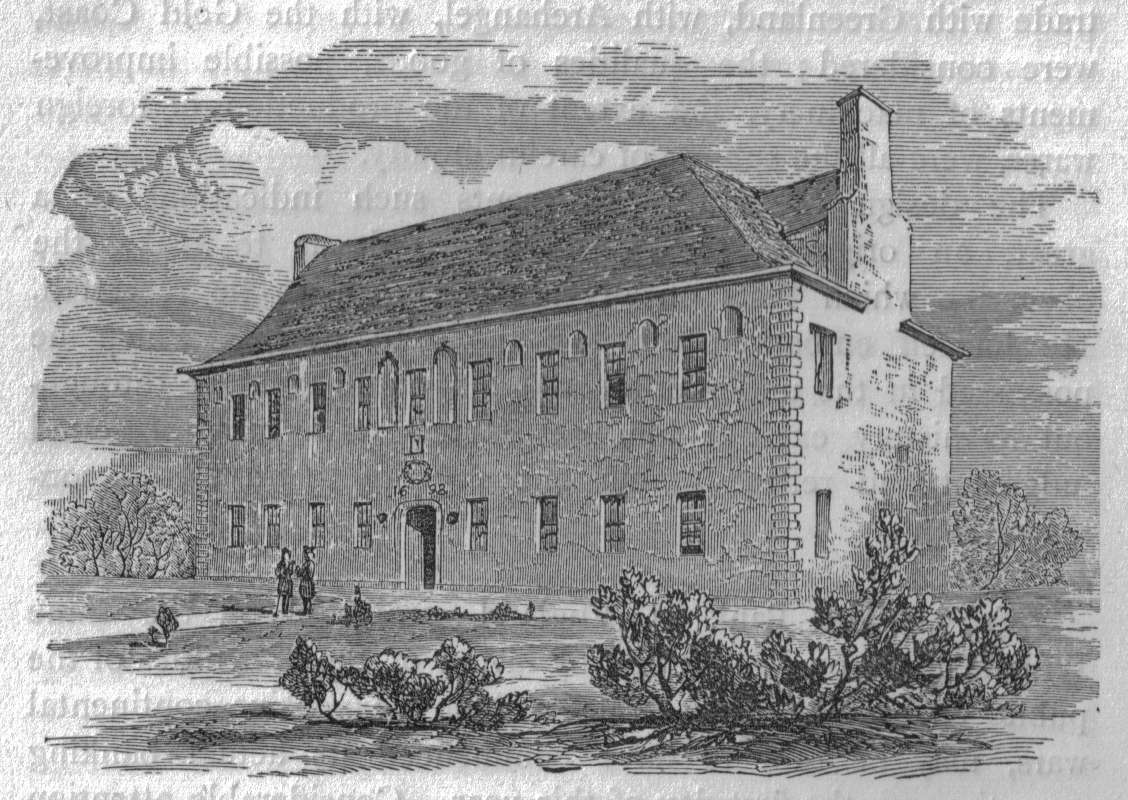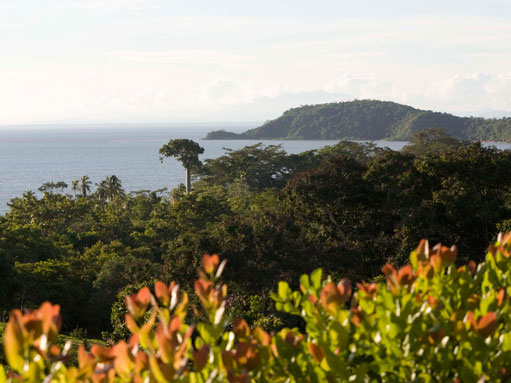Darien was considered one of the most important natural borders of the New Kingdom of Granada, since it ensured the internal and external domain of the South Sea and was a guarantee of intercontinental and intercolonial communications. It was known since its discovery in September 1513 that dominating the passage of the isthmus through this sector meant being the owner of the new ocean, of its commerce, and influencing the possession of the lands that were found along the way or in the other bank.
The Darien Project
The merchant and banker from Dumfries and Galloway in Scotland, William Paterson, developed the vision of colonizing a strategic place in the Spanish Indies with a double purpose: to reach the treasures of the Eastern countries as soon as possible and, according to his own expression, “snatch the door of the seas and the key of the universe to Spain”. The English government, then at peace with Spain, did not approve his project, as the Scottish did. In 1695 the parliament of his country approved the creation of a Company to negotiate with Africa and the Indies. This visionary knew how to move well, and in a short time he managed to sell shares of the new company for one million pounds in Scotland, England and Holland.

New Edinburgh and the Alliance with Indigenous
On July 17, 1698, two transport and three armed ships sailed from the port of Leith, in the kingdom of Scotland, with about 1,200 passengers. The course of the fleet pointed to the Isthmus of Panama and its goal was to reach Darien. The leader, William Paterson, took possession of the land without resorting to an earthly or divine authority as the Spanish had done, signing a treaty of friendship and defensive alliance with the cacique of the region. The friendship was so great that it allowed them to build a town on the newly called Scottish Cape that they baptized as New Edinburgh.
They fortified it with two forts, one at the entrance with 52 cannons, which they named San Andres, and another of eight with 600 garrison men, taking possession of the coast between Cape Tiburon and the port of Soriban with a depth of 40 English miles. inland, baptizing it as Caledonia. All this was part of the treaty of mutual assistance between Indians and Scots against the Spanish.
A Promising Start
A pamphlet was found in Glasgow describing the first impressions of the settlers of the wondrous Darien: “The wealth, fecundity, climate, and good condition of the land are much better than we have come to expect. It seems as if God Almighty had reserved all this for the present occasion, favorably preparing our way, and disposed to the Indians in the same direction.” The Scots at first found a very healthy region, since they had not suffered from any of the dangerous diseases so frequent in other American islands.
The government headed by Paterson was managed as a mercantile or banking organization. A port was built and defended with a fort, the land was planted, fishing and turtles also provided food. All with the aim of finding the best way to reach the South Sea.

Spanish Protest and Scottish Fall
The Spanish government protested before the court of Saint James, supported by France and Holland, who also did not like the colonial expansion of the English. King William III of England came to prohibit all aid to the Scots and prevented supplies from being shipped from Jamaica to New Caledonia. Soon the weather, rains and disease exhausted the Scots and showed them the true face of the tropics. With hunger, fevers and without help, discontent germinated and rivalries prospered.
Paterson determined that the survivors embark for New York, not knowing that two new ships with 300 men were already on their way to Darien. The newcomers found the colony dismantled and chose to take refuge in Jamaica.
Last Migration to Darien
Scottish stubbornness was stronger than misfortune. In September 1699, a third expedition of 1,300 immigrants was set up bound for New Edinburgh at Darien. However, history repeated itself, panic spread and riots broke out. The authorities saw the need to execute one of the agitators to avoid a bloody revolt. In the end, the Spaniards showed up.

From Cartagena de Indias by sea, and from Panama by land, troops arrived to expel the invaders. The Governor of Cartagena, Juan Diaz Pimienta, accompanied by Admiral Peredo’s squadron, sent by order of the Viceroy of New Spain from Havana, blockaded the Caledonia Bay. Troops arriving by land cut off the fresh water and defeated the settlers in some skirmishes. In the late 1700s, the Council of Scots determined to surrender. Some went to their barracks and the others set out for Jamaica. William Paterson and thirty other survivors managed to return to Scotland. There they had to account to many of the thrifty Scots who lost their assets in the bankruptcy of the Darien Company.


